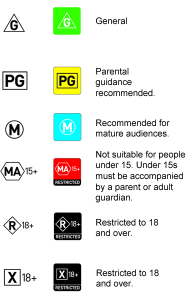Are Psychiatric Drugs, Documented to Cause Violence Behind the Flinders Street Car Ramming?
As the details of the horrific Flinders Street ramming attack have unfolded, it seems that “random” acts of violence are on the rise. But as some information has revealed, Saeed Noori has had a history of mental illness and in Australia, this most likely means he had been taking psychiatric drugs at some point. Psychiatric drugs have long been known to cause violence and aggression in some users, leading them to commit irrational violent acts, completely at odds with their regular behaviour as confirmed by friends and family. Newspapers are littered with headlines of the violent attacks and tragedies committed by people on psychiatric drugs.
Highlighting the danger is the 27 international drug warnings, including in Australia, alerting the public that psychiatric drugs can cause violence mania, hostility and aggression.1 These drugs can potentially turn a peaceful person into a Mr Hyde, capable of acts of extreme violence towards others and also greatly increase the risk of self-harm and suicide.
A 2015 study published in World Psychiatry, investigated 960 Finnish adults and teens convicted of homicide. The study showed the odds of their killing others were 45% higher when they were on benzodiazepines. The Los Vegas strip shooter, Stephen Paddock, who shot and killed 58 people in October this year was prescribed these drugs.2
According to medical records, Andreas Lubitz, the pilot who deliberately crashed a Germanwings plane in a remote, mountainous area of Southern France, killing all 150 people on board, was on drugs for depression, anxiety and panic attacks. The drugs included lorazepam and an antidepressant. Lubitz had doubled the dosage of the anti-depressants prescribed to him. He reportedly blamed the drug for loss of sleep and panic attacks. He also spent a year and a half in ‘psychiatric treatment’ six years prior to the crash.
In a 2010 study conducted by The Institute for Safe Medication Practices, the side-effects of drugs which had been reported to the US Food and Drug Administration were investigated. This study found that the top 10 drugs linked to violence included 5 antidepressants (Prozac, Efexor, Pritiqu, Luvox, & Paxil – known as Aropax in Australia) amphetamines used for ADHD and the non-stimulant ADHD drug, Strattera [an antidepressant] and the benzodiazepine triazalam (Halcion).3
Australia’s drug regulatory agency’s adverse reaction drug database (Therapeutic Goods Administration) reveals some shocking reports for homicidal behaviour. Their database reveals the following:
- A 35-year-old man’s side effect report states, “The patient experienced disassociation and murdered his wife while on Prozac.”
- A 19-year-old on the antipsychotic Zyprexa and Prozac: “Patient had thoughts of killing himself which made him violent, tried to hit someone else, tried to kill a security guard with feelings of killing and tried to do physical damage. Tried to hurt himself and had thoughts of hurting other people.”
- An 18-year-old on the antidepressant Avanza: “She cleaned the house at night, her sexual desire was absent and she experienced aggression and homicidal ideation-‘cut him up and feed him to the pigs.’”
- A 25-year-old on the antipsychotic Seroquel: “The patient experienced homicidal ideation, suicidal ideation, a suicide attempt, auditory hallucinations and akathisia [inability to remain motionless]. She found herself at her parents’ house carrying a knife with the intention to kill them.”
- A 21-year-old male also on Seroquel “would wake up wanting to kill himself and everybody.”
- A 24-year-old on Efexor and Zyprexa was reported as: “Wanted to kill people, went into a frenzy and destroyed a shed and wall.” 4
At least 36 US school shootings and/or school-related acts of violence have been committed by those taking or withdrawing from psychiatric drugs resulting in 172 wounded and 80 killed. While more school shootings have occurred across the US, information about the killer’s drug use was suppressed from the public—officials neither confirming or refuting if the shooters were under the influence of prescribed drugs.5
It is not that everyone who takes a psychiatric drug will become violent but clearly some do. And for others on these drugs, the violence can turns inwards as they attempt or successfully take their own lives. It is Russian Roulette on who will experience these extreme effects. Withdrawal side effects known as “withdrawal syndrome” can be even more severe in some people.
And while there is never one simple explanation for what drives a human being to commit such unspeakable acts, all too often one common denominator has been surfacing, which we can as a society do something about — prescribed psychiatric drugs. It is an injustice that the general public, police and authorities are not being informed about the well documented links between psychiatric drugs and violence.
Executive Director of the Australian National Office of Citizens Committee on Human Rights (CCHR) Ms Shelley Wilkins says, “Authorities need to investigate what psychiatric drugs Saeed Noori was taking or had taken during any mental health treatment. The research exists that link these drugs and horrific acts of violence such as this.”
CCHR has produced an 11-minute documentary which gives further insight titled, Psychiatry’s Prescription for Violence featuring lawyers, doctors and others speaking about the clear, documented link between these drugs and the violence they can trigger. It can be viewed at http://www.cchr.org/videos/psychiatrys-prescription-for-violence.html or email the Australian National Office to obtain a free copy: national@cchr.org.au
References
- https://www.cchrint.org/psychiatric-drugs/drug_warnings_on_violence/
- https://www.cbsnews.com/news/do-certain-medicines-raise-murder-risk/ https://www.ncbi.nlm.nih.gov/pmc/articles/PMC4471985/
- http://healthland.time.com/2011/01/07/top-ten-legal-drugs-linked-to-violence/
- TGA Adverse Drug Reactions, Case Numbers: 21453, 216399, 208473, 208442, 21455, 199503- CCHR has published these full TGA reports on this link: http://cchr.org.au/side-effects Abbreviated reports can also be viewed on the TGA website. Generate a report for each drug and search reports. https://www.tga.gov.au/database-adverse-event-notifications-daen
- https://www.cchrint.org/school-shooters/

